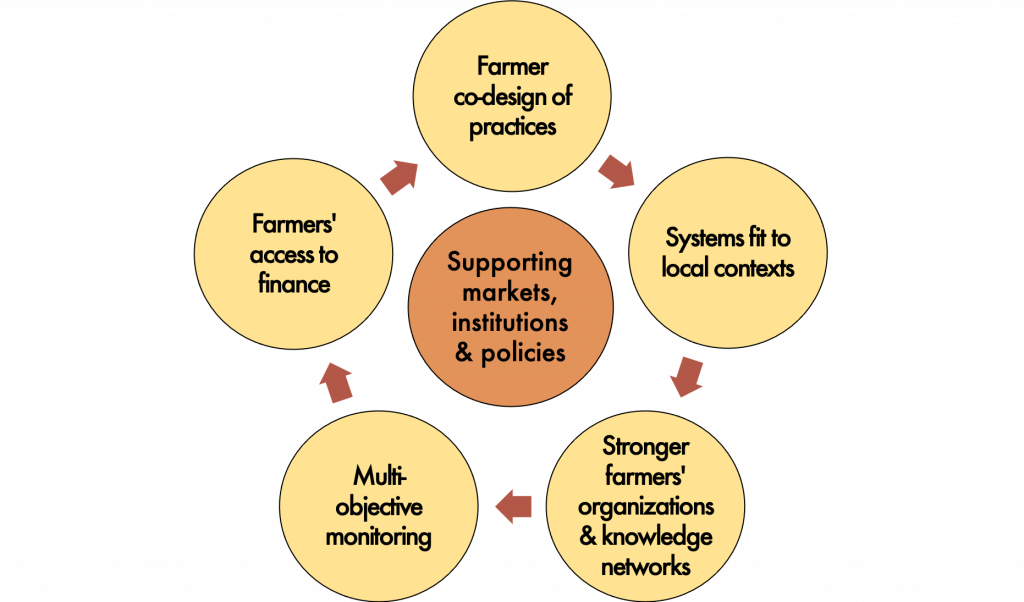The evidence on agroecology’s impact on mitigation is modest, except for enhancing carbon sequestration in soil and biomass. Where there is strong evidence: Where there is weak evidence: Where there is moderate evidence: Improve investment in agroecology for climate change will require long-term funding modalities, outcome target setting that includes environmental services and climate benefits, and systemic change and incentives to build farmer capacities (Fig 1). Rather than treating climate change adaptation and mitigation as co-benefits, global food systems must be actively managed for climate change benefits. >Figure 1. Key elements of exiting agricultural development programs to increase support for agroecology and climate change outcomes. Tackling climate change has always required broad cooperation and diverse approaches. Implementing agroecology across organizations with different political visions for development will require transcending the many labels for sustainable agriculture and climate change (e.g., climate-smart agriculture, regenerative agriculture), including agroecology. The point is to spend less time debating what agroecology is, and more time on how it can be used to improve agricultural mitigation and adaptation to climate change. Originally published on April 22 on the CCAFS website: Agroecology: A key piece to climate adaptation & mitigation?What the evidence tells us
Climate change adaptation
Climate change mitigation
Adaptive capacity
Yields
Data gaps
Donor investments
What actions are needed?
Recommendations from the review
Powered by Atlassian Confluence![]() 8.5.12, themed by Refined
8.5.12, themed by Refined![]() 7.5.9
7.5.9






